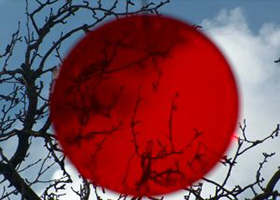


Still, the economic news is mixed. On the one side, investors bought up the yen, in expectation of Japanese investors selling foreign assets to help the massive reconstruction effort.
Against that is the weight of a debt load that is roughly 200% of GDP – something investors baulked at when it came to certain tourist destinations in Europe. Why no Greece? Gadfly economics blogger Dean Baker, who is frequently critical of mainstream economic reporting suggests this:
“Even though Japan’s debt is more than twice its GDP (about three times the size of the U.S. debt), there is no risk of default since its debt is in its own currency. In this way Japan is like the United States and the United Kingdom, and unlike Greece and Ireland.
“In the worst case scenario, Japan or the United States would print lots of money and see inflation. Given that Japan has been flirting with deflation for almost two decades this doesn’t seem like a plausible scenario, but in any case it is not the story of Greece being held at the mercy of the bond vigilantes who will not buy its debt.”
Others are not so assured on the inflation front. Over at ZeroHedge, guest columnist Jim Quinn looks at Japan’s longer-term outlook.
“The short-term impact of this disaster will push Japan into recession. The rebuilding efforts over the coming years will create a positive GDP figure, but will not do anything to benefit Japan over the long haul. The billions designated to rebuild will be money not invested in a more beneficial manner. The linear thinkers conclude that over the long term Japan will be OK. These people are ignoring the double D’s – Debt and Demographics. When Japan entered its two decades of recession and experienced the Kobe earthquake in 1995, its government debt stood at 52% of GDP. Today it stands at 225% of GDP. Twenty-one years ago, the Japanese population was still relatively young, with only 12% of the population over 65 years old. The population of Japan peaked in 2004 and now is in relentless decline.”
That’s a recipe for hyperinflation, he suggests – or at least bond vigilante fears – that so far have not been borne out. Of course, there’s always the black swan … or models that, like a stopped clock, are right twice a day, through no fault or perscipience of their own.
More significant, perhaps, is the impact on the U.S. Obviously, the trade deficit will lessen, as Sony and Toyota, among others, lose a month of production. Then again, Japan may sell some of its foreign reserve holdings, putting pressure on U.S. interest rates. From one brow-beaten economy to another, one might say.
So is Japan a buy? A cover story in Barron’s suggests so: “The average stock in Japan is selling now for 13.9 times its annual profit. Japanese stocks haven’t been this cheap since the financial crisis.
“More remarkable, current stock prices value Japanese companies at just under book value, or assets less intangibles and liabilities. By contrast, stocks in the U.S. and China sell for twice book.
“Even before the tsunami, Japan was looking cheap. The recent slide means that some of the best companies in the world are available at unheard-of-prices. These stocks are likely to rebound 10% over the next few months.”
That view is seconded by perma-bear David Rosenberg. “To show just how far the market went in a classic case of shooting first and asking questions later, at one point last week CDS spreads were priced such that Japan was viewed as a greater default risk than Mexico or even Panama. I mean, there is no doubt that Japan has a massive government debt loan (200% of GDP) and that is about to get even larger but 95% of that debt is held by the country’s own residents.
“We are always wary of front covers, but Barron’s may well have this one pegged. Global markets are now priced at twice book value, double what it is in Japan. The weekend WSJ made the point that on a 10-year cyclically smoothed basis, the Nikkei is trading at a P/E multiple of 14.5x, which is about the cheapest the market has been in over 40 years. As the weekend WSJ points out, the Japanese and U.K. equity market capitalization levels are roughly the same and yet global mutual funds and ETFs have 25% less of their assets in Japan.”
Lots of questions to ask before pulling the trigger, it appears. And this time, the magazine cover may signal buy, rather than sell.
